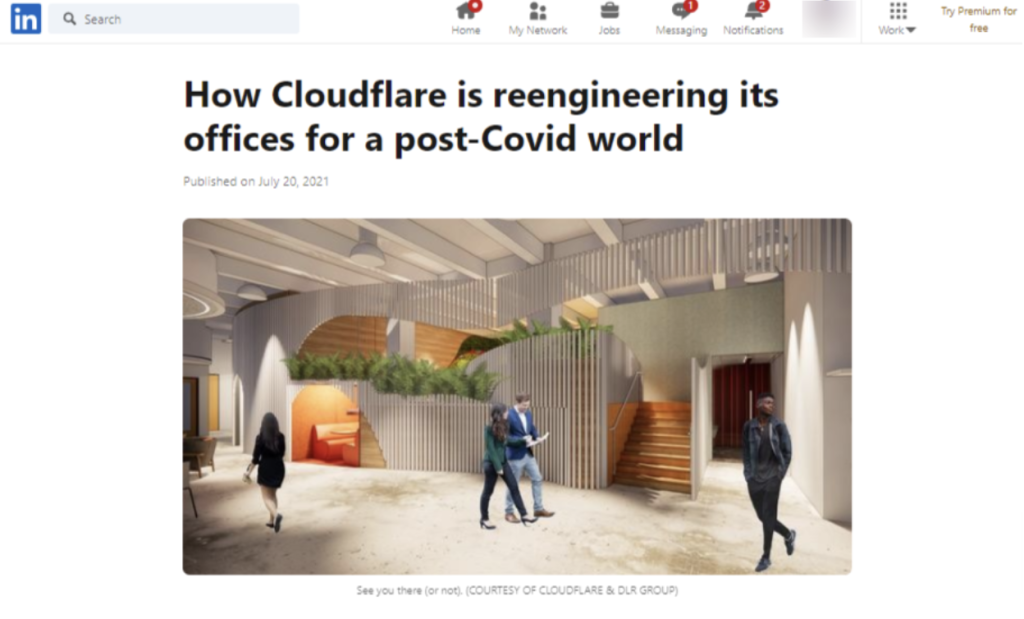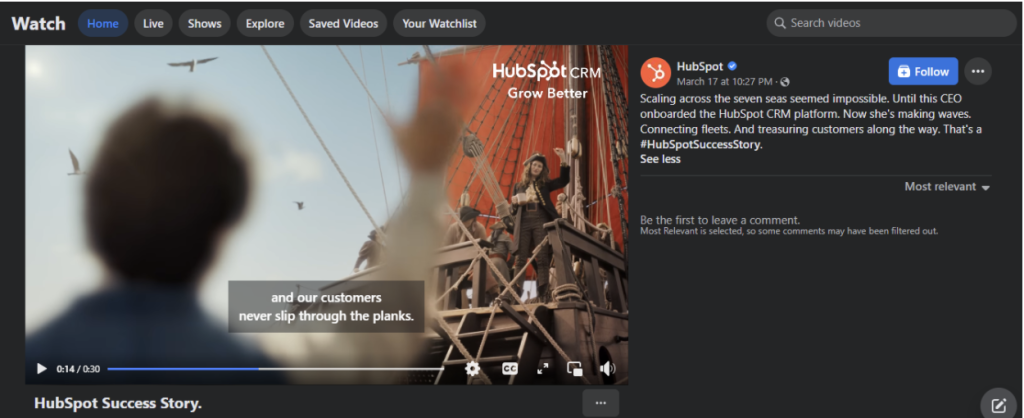Is your B2B business on social media yet?
If not, your company can miss out on tons of engagement, conversion, and sales opportunities.
Leverage social media to step up your B2B marketing efforts.
Develop a solid social media strategy and use the best-fitting platforms and B2B marketing tools. Doing so can support your initiatives to connect with your social media audiences, build relationships, engage them effectively, and ultimately increase your sales.
Get a head start optimizing your B2B marketing initiatives through these five time-tested social media tactics.
1. Publish content with LinkedIn articles
Contents [show]
LinkedIn provides an excellent space to draw attention to your brand while boosting your credibility in your audiences’ eyes.
Publish and share relevant articles directly on LinkedIn to help turn your passive audiences into an engaged community.
Your published long-form content on your LinkedIn page gets indexed on your profile, helping you distribute content efficiently to get maximum exposure and engagement.
Publish timely, relevant, and compelling content on LinkedIn as part of your social media strategies for your B2B business.
Increase your chances of succeeding by following these tips.
- Publish consistently. Set a schedule to ensure you publish your LinkedIn articles consistently. Doing so increases your chances of engaging more audiences since you can keep your content flowing.
Consider posting weekly, monthly, or quarterly—whichever is the most realistic and possible for you to start.
- Include rich media. Incorporate images, Slideshares, videos, and GIFs into your LinkedIn articles. It’s a great way to break up long blocks of texts and help draw attention to your content.
For instance, in your article, you can add a captivating featured image, the way Cloudflare did in the example below.

- Promote your content across your social channels. Get more eyeballs on your content and drive traffic by promoting your LinkedIn articles across your social media channels such as Facebook and Instagram.
- Repurpose and syndicate content as previews. Syndicating your LinkedIn content doesn’t mean regurgitating the entire article somewhere else since this can have negative Search Engine Optimization (SEO) implications.
Instead, write a new headline, share a brief section of the content to show its value, and point readers back to the full piece on your LinkedIn page.
2. Create compelling videos for Facebook
Entertain, educate, and engage your target audiences on Facebook with compelling videos.
Videos are easier to digest and share than text-based content, making them excellent pieces to post to help expand your reach and increase your engagement opportunities.
Amplify your B2B marketing initiatives with the following ways to use videos for Facebook.
- Host a Facebook Live. Engage your followers and potential B2B buyers in real-time by using Facebook Live. You can host Q&As, webinars, and live product demos. Don’t forget to end the event with a strong CTA and offer to generate leads.
- Run FB video ads. Run Facebook video ads to help expand your reach, promote your brand and products, and get more views. Video ads can also increase your traffic and conversions.
Get as creative as you want with your Facebook videos.
For instance, the Success Story video from HubSpot put a fun twist on how a captain of a pirate ship achieved success through the HubSpot CRM platform.

If you’re sharing your Facebook videos on your website, optimize your headlines and descriptions to help support your Software-as-a-Service or SaaS SEO efforts.
3. Post engaging Instagram Stories
Posting and sharing content on your social media feed can help you draw attention to your brand. However, you can kick this tactic up a notch by creating Instagram Stories.
IG Stories let you post photos, videos, GIFs, etc., that disappear after 24 hours. You can save these as highlight Reels on your Instagram page.
Stories appear at the top of your audience’s feed, making them highly visible and perfect for announcements and promotions.
Use Stories to share less polished and more casual content to help you connect with your audiences better.
It can also help humanize your B2B company’s brand, allowing you to have more personal interactions with potential clients.
For example, you can share IG Stories showing behind-the-scenes content. It can help your B2B buyers get to know your brand or product better while helping you generate leads.
Italian shoe company M.Gemi nailed this through its Workshops IG Stories. The Stories feature a series of BTS photos and clips showing what goes on in the production process.
TikTok allows you to develop genuine connections with your audiences through simple yet valuable content.
For instance, Zoom shows audiences their Timer feature for meetings through a quick TikTok video.
Other ways to create and share genuine content on TikTok include the following.
- Share User-Generated Content (UGC). Develop and foster shared experiences by encouraging audiences to share UGC and share it on your feed.
It can be a great way to help you build emotional connections with your prospective B2B buyers since you can showcase their content while also promoting yours.
- Post how-tos, tutorials, and demos. Use TikTok to share short product guides and other educational content with your B2B customers.
You can also post content about your future releases, product demos, new features and functionalities, and answer Frequently Asked Questions (FAQs).
5. Establish your brand personality and voice on Twitter
Leverage Twitter to build powerful associations with your brand’s unique personality and voice. It’s an excellent way to increase brand awareness and recognition among potential B2B clients.
Develop your brand voice on Twitter with these tips.
- Set the tone. Use a consistent tone that conveys your company’s vibe. The tone should also embody how you want your audiences to feel about your brand—whether you want to come off as serious, edgy, funny, etc.
For instance, Square shares content focused on small business owners the company serves. The brand’s overall tone on Twitter is casual, encouraging, and informative.

- Tweet and share content with your target audience in mind. Know who your ideal B2B buyer is to create cohesive and consistent content on Twitter.
It can help ensure you’re creating content for the right audience at the best time and help ensure your Tweets drive the engagement you want.
- Include relevant and captivating visual elements. Besides your logo, translate your brand’s attributes into imagery, colors, and other graphic elements in your Tweets.
Know the best ways to use social media to support your B2B marketing initiatives.
Take inspiration from the social media strategies in this guide to help you hit the ground running and set up your B2B marketing efforts for success.




